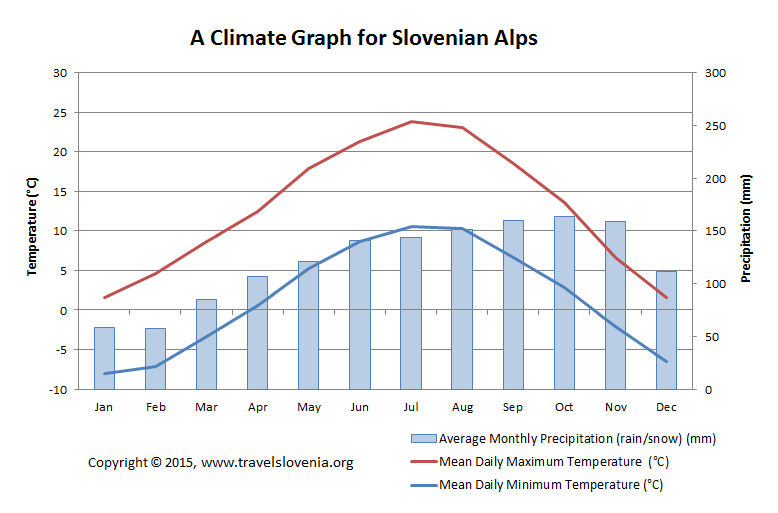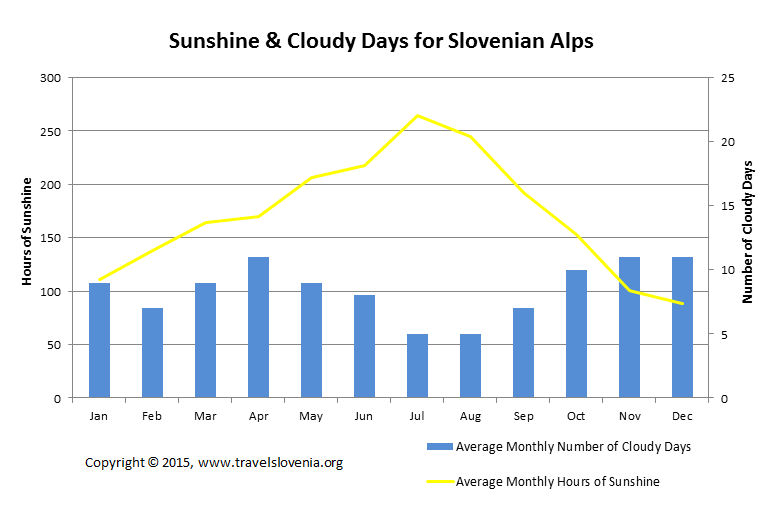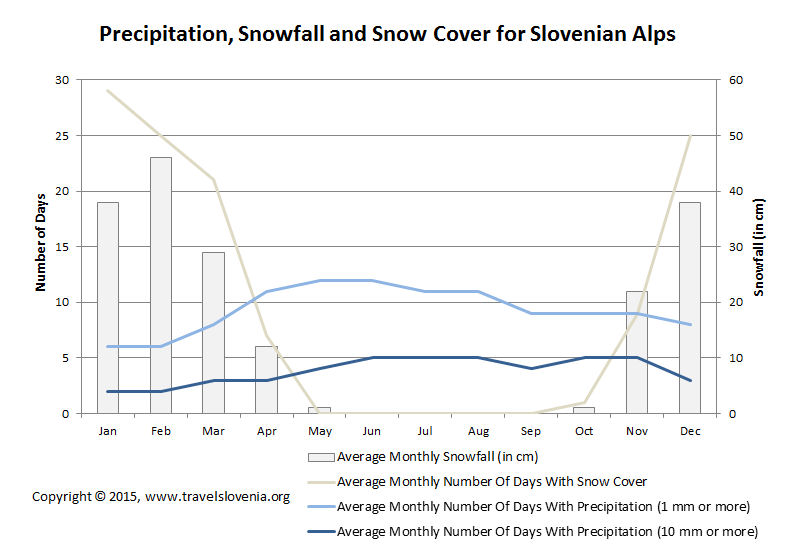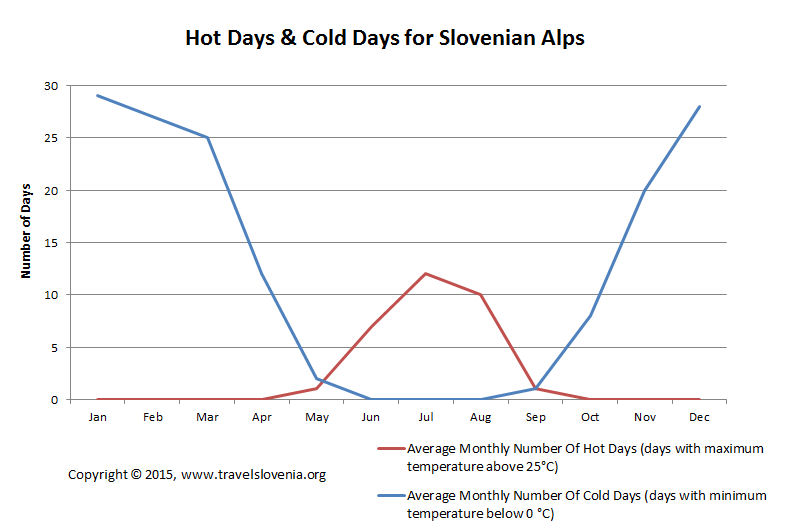Gorenjska, or the Slovenian Alps as it is most commonly called in English, has the moderate Alpine climate with very distinctive seasons, which change quickly and noticeably.
Although the climate in the Slovenian Alps can be a little chilly at times, the summer months are quite warm. From mid-June to August, the fine summer weather in Slovenian Alps results in daytime averages of between 20°C and 25°C, although with a little strong sunshine, temperatures can often rise higher.
The winter season in Slovenian Alps tends to be quite long and stretches between November and April. Winter weather is cold, with freezing nights and heavy periods of snow. As soon as spring arrives, the climate quickly changes, the days become longer and the sunshine is more plentiful.
When to go – the best time to visit Slovenian Alps
The winter climate arrives early (mid-November) with heavy overnight frosts add a noticeable crispness to the air, followed soon by spells of snowy weather. Spring is usually quite late, but by the mid of May (or sometimes late of April), flowers are blooming and the trees quickly burst back into life, with daytime temperatures staying above 10°C. The summer climate is a popular time to visit Slovenian Alps. Autumns in Slovenian Alps are fairly short lived, since the winters can be long.
SLOVENIAN ALPS YEARLY WEATHER SUMMARY
What’s the best time to visit Slovenian Alps in Slovenia? Here are some facts:
– The months June, July, August and September have a nice average temperature.
– July is the warmest month with an average high of 23,8 °C and an average low of 10,5 °C.
– July is also the month with the most sunshine, with almost 9 hours per day.
– January is the coolest month with an average high of 1,6 °C and an average low of -8,8 °C.
– October is the wettest month with an average of 164 millimeters of precipitation.
– April, November and December are the most cloudy months with an average of 11 mostly cloudy days.
– February is the driest month with an average of 57 millimeters of precipitation.
– January is the month with the highest number of days with snow cover – 29 days.
– February is the month with the most snowfall, with a little over 46 centimetres on average.
For more specific information about the climate of Slovenian Alps, Slovenia, please take a look at the graphs shown below.

A climate graph for Slovenian Alps, Slovenia showing mean daily maximum and minimum temperature for a month and average monthly precipitation (rain/snow).

Graph showing average monthly hours of sunshine and average monthly number of cloudy days for Slovenian Alps, Slovenia.

Graph showing average monthly number of days with precipitation, average monthly number of days with snow cover and average monthly snowfall (in cm) for Slovenian Alps, Slovenia.

Graph showing average monthly number of hot and cold days for Slovenian Alps, Slovenia.

The summer climate is a popular time to visit Slovenian Alps. Image by MihaV / CC BY 2.0

